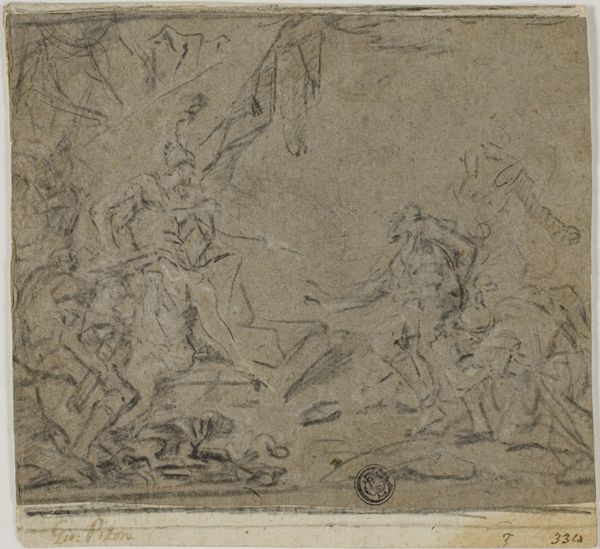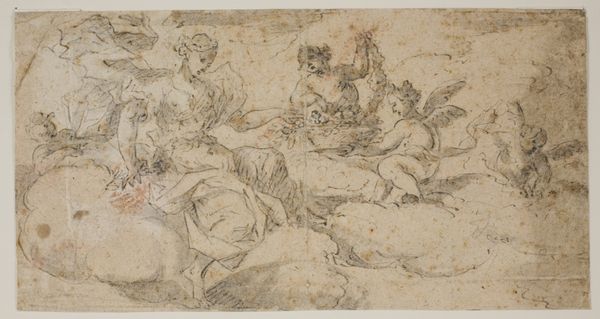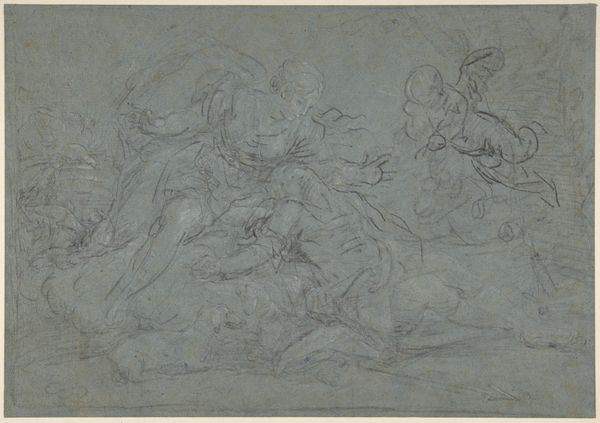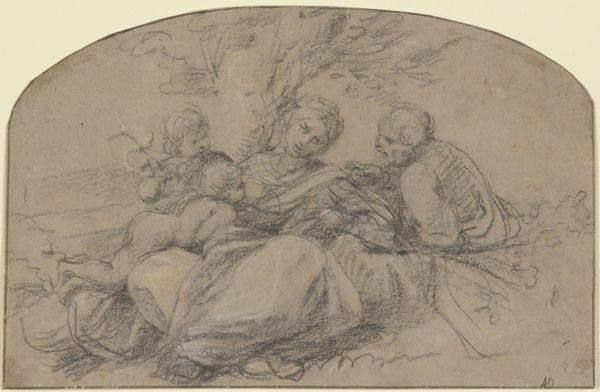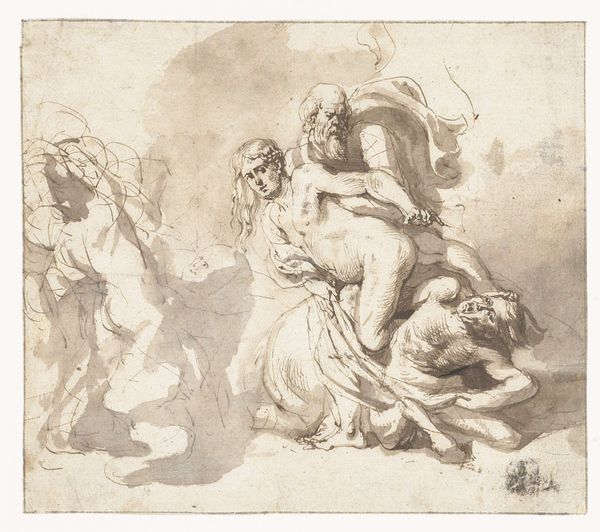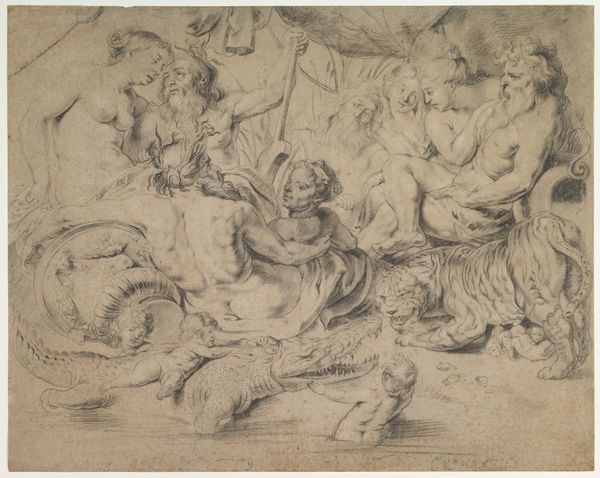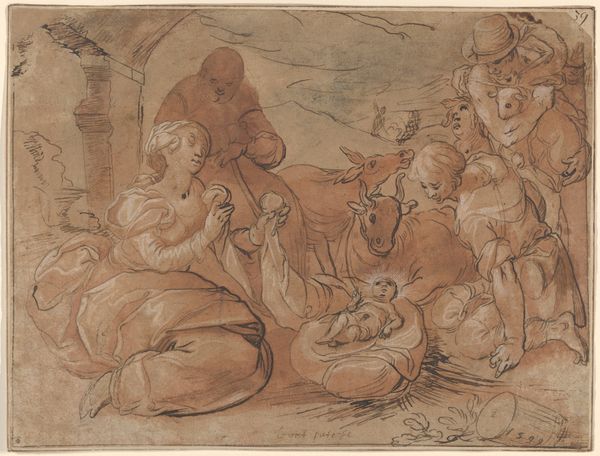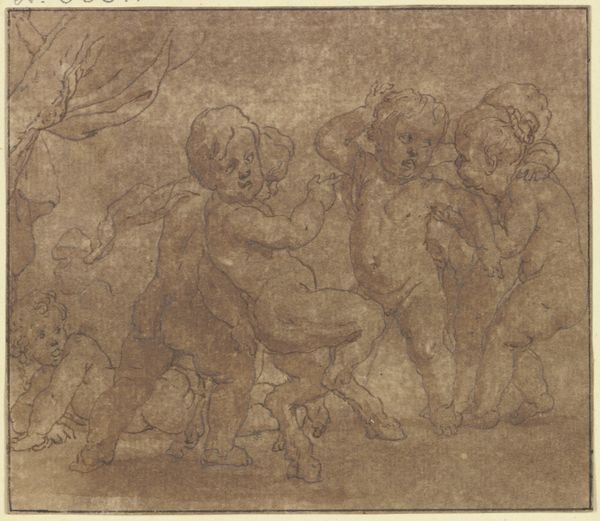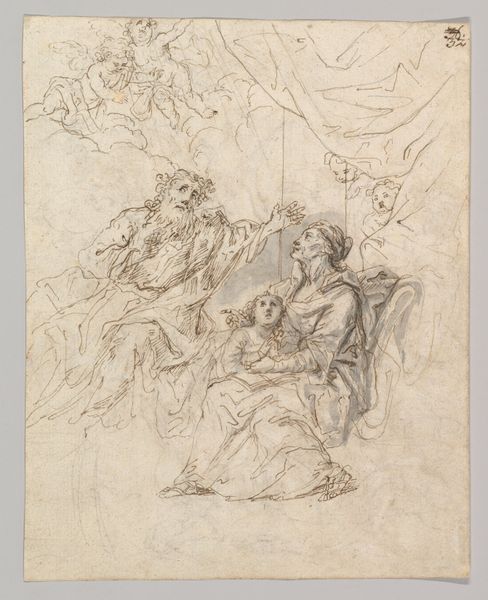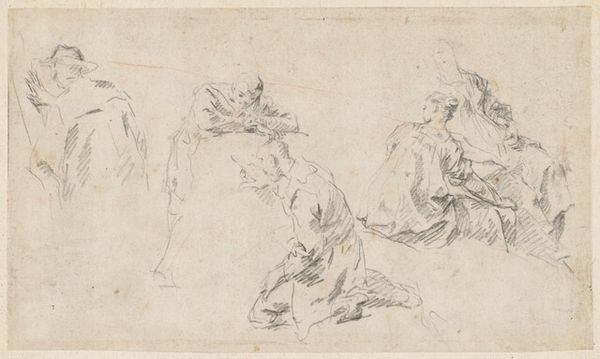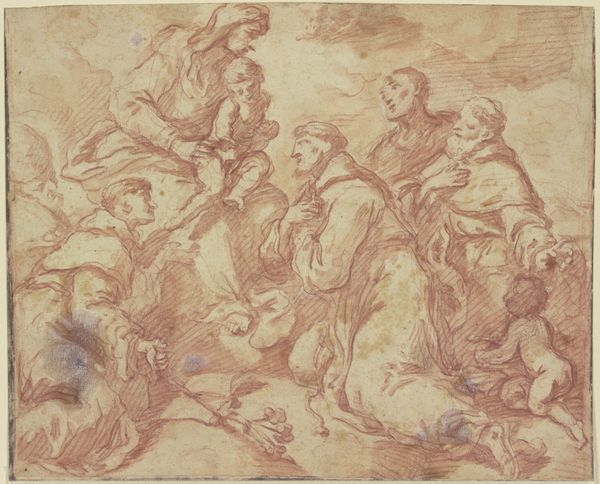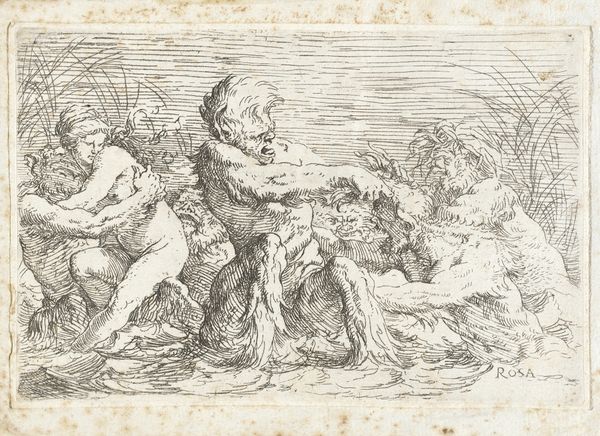
Two prostrated figures turned towards each other 1548 - 1628
0:00
0:00
drawing, pencil
#
drawing
#
pencil sketch
#
mannerism
#
figuration
#
11_renaissance
#
pencil
Dimensions: 116 mm (height) x 206 mm (width) (bladmaal)
Curator: Welcome. Here we have "Two prostrated figures turned towards each other," a pencil drawing attributed to Jacopo Palma the Younger. Experts place its creation sometime between 1548 and 1628. You can currently find it here at the SMK, the Statens Museum for Kunst. Editor: Okay, first impression: that’s heavy. Visually and emotionally heavy. The figures are shrouded in a darkness that seems almost tangible, like charcoal dust clinging to skin. It’s a drawing, but it feels sculptural in its weight. Curator: It is compelling. Mannerism, the style to which this piece is connected, often plays with drama and exaggerated forms, a departure from Renaissance classicism. The drawing highlights this perfectly; these aren’t idealized bodies; they convey the stark realities of grief and submission. Editor: Submission…yes. You see it in their posture, literally bowed down. I'm drawn to the tension, though. They're turned towards each other but not touching. There’s an unspoken connection, or maybe a plea. Do you think that relationship shifts our perspective on the work? Curator: Absolutely. That implied intimacy adds a layer of psychological depth. Palma was working in a Venice still deeply influenced by social upheavals and religious reformations. This drawing is not simply about sorrow. It seems to ask how humans turn to each other in times of uncertainty. How public actions affect private lives. Editor: So much left unsaid, which perhaps allows the viewer to imprint some of their own fears or experiences onto those figures. Do you feel, given its muted tones and suggestive forms, it can mean several different things to different audiences? Curator: Exactly! And think, too, about the drawing as process. This wasn’t intended as a final product but rather an exploration. That openness, that willingness to experiment, makes the work accessible even now. Its incompleteness almost invites collaboration. Editor: Yes, it certainly stirs something within you, doesn’t it? Like glimpsing a fragment of a dream, and being invited to interpret it for yourself. What do you make of its title in relation to this experience, being so straightforward? Curator: A fascinating point! Perhaps it served less as a description and more as an indication of the human connection sought through it, during and after the artist’s act of creating. In any case, "Two prostrated figures..." invites us into its fold as it continues to beckon long into the future. Editor: Well, it's a haunting image to carry with us as we move along, isn’t it? Thank you for illuminating the subtle intensities present here.
Comments
No comments
Be the first to comment and join the conversation on the ultimate creative platform.
